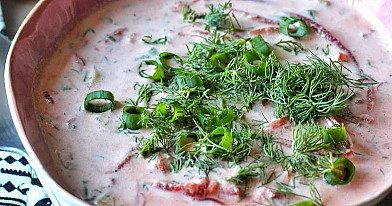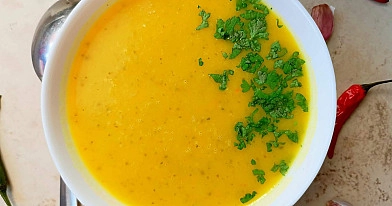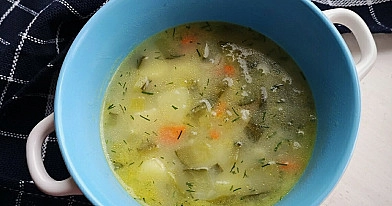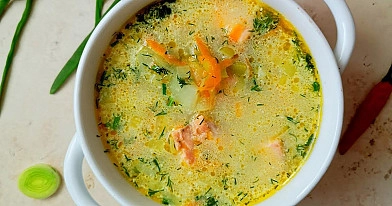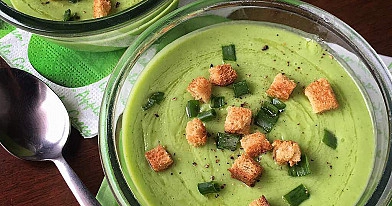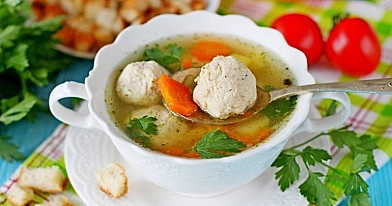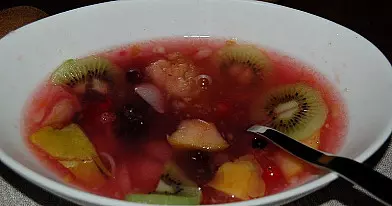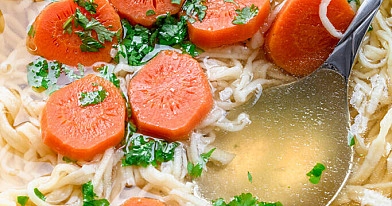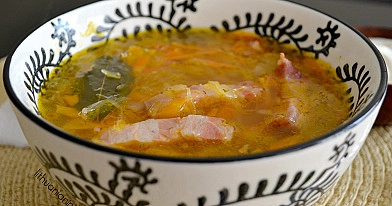
Okroshka - white Russian cold borsch with radish and mustard
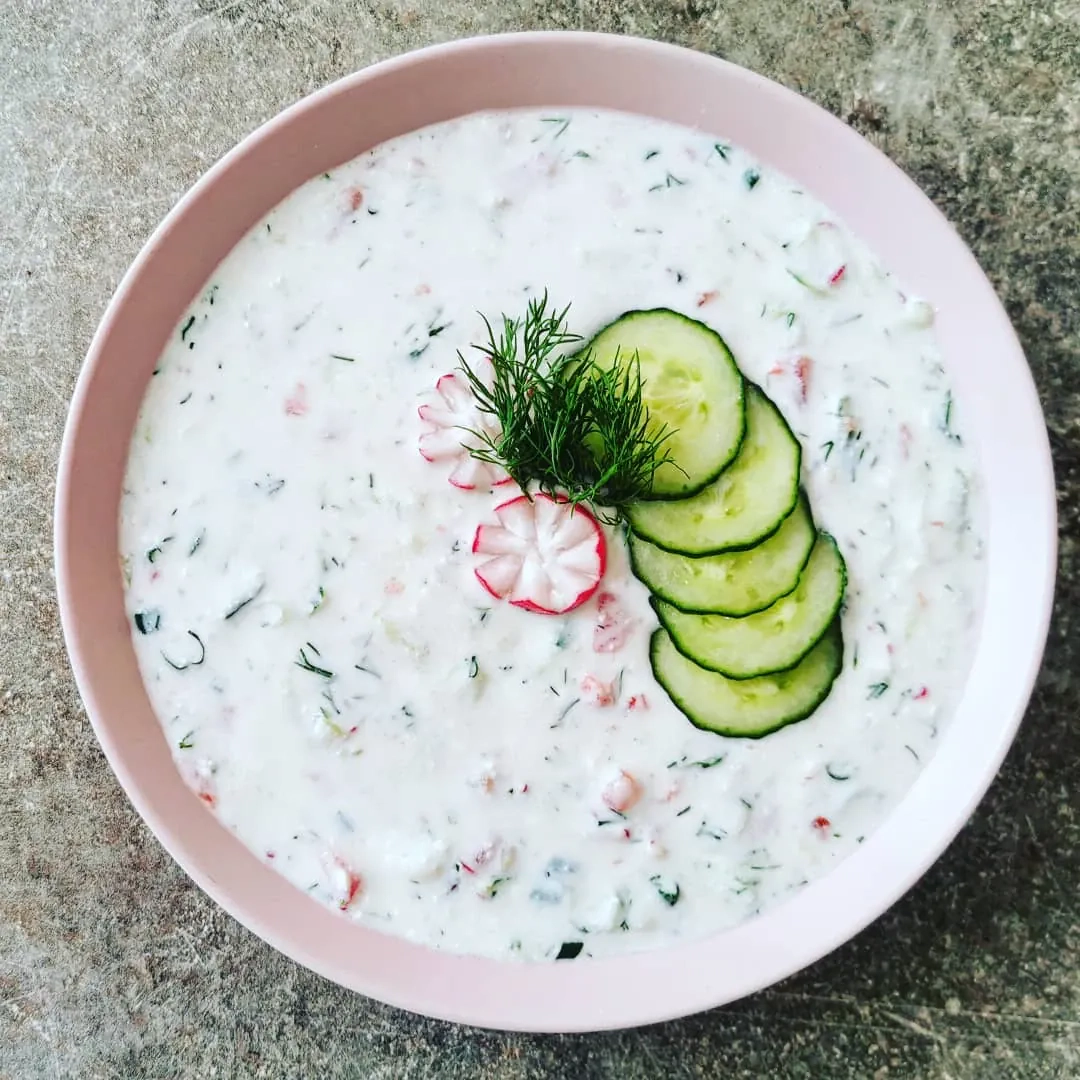
- Meat: Instead of ham, use boiled chicken breast, leftover grilled beef, or even smoked sausage for a stronger flavor.
- Radishes: Replace with kohlrabi or crunchy turnips if radishes are unavailable.
- Cucumbers: Standard garden cucumbers work well in place of long cucumbers.
- Kefir: Natural yogurt diluted with water, buttermilk, or traditional kvass can be used instead.
- Cream: Substitute with Greek yogurt, light sour cream, or crème fraîche.
- Mustard: Dijon mustard adds smoothness, while whole grain mustard gives texture.
- Fresh herbs: Use chives, tarragon, or fresh coriander if you don’t have dill or parsley.
Cooking tips for the perfect Okroshka
- Always dice ingredients into small, uniform cubes to achieve the traditional texture.
- Chill the soup base before serving – the colder, the better.
- If using kvass instead of kefir, slightly reduce mustard for a milder taste.
- Prepare the soup base (vegetables and protein) a few hours in advance and refrigerate – this enhances the flavor.
- Do not add kefir too early; keep it separate and pour just before serving to preserve freshness.
Chef’s advice
For best results, choose full-fat kefir as it gives the soup a rich, velvety texture. Low-fat kefir tends to make the dish too watery. If you prepare Okroshka for guests, serve it in chilled bowls to keep it refreshing for longer. This recipe has been tested in my kitchen many times, and I can assure you that adjusting the ratio of kefir and water to your taste is key: some prefer it thicker, while others enjoy it lighter and more drinkable.
Ingredients
- Ham or boiled beef: 200 grams.
- Radishes: 300 grams.
- Long cucumber (or garden cucumber): 1 piece.
- Fresh onion leaves, dill, and parsley: 1 small bunch.
- Potatoes: 3 medium.
- Eggs: 4 pieces.
- Kefir: 1 liter.
- Cold boiled water: 250 milliliters.
- Cream: 100 grams.
- Mustard: 2 tablespoons.
- Salt: to taste.
- Black pepper: to taste.
- 1. Eggs were placed in a saucepan, covered with cold water, and boiled until hard, about 10 minutes. Once cooked, they were cooled under running water, peeled, and chopped into small cubes.
- 2. Potatoes were washed and boiled in their skins until tender. After cooling, the skins were removed, and the potatoes were cut into neat, even cubes.
- 3. Meat was diced into small pieces, whether using ham, sausage, or boiled beef, making sure the size matched the potato and egg cubes.
- 4. Radishes and cucumbers were thoroughly washed, trimmed, and chopped into small dice for a refreshing crunch.
- 5. Fresh herbs – onion leaves, dill, and parsley – were finely minced to release their aroma.
- 6. All chopped ingredients were combined in a large bowl, mixed with cream, mustard, salt, and black pepper. This mixture was covered and placed in the refrigerator for at least 1 hour, allowing flavors to develop.
- 7. Just before serving, portions of the chilled vegetable-and-meat mixture were placed in bowls. A blend of kefir and cold boiled water was poured over the mixture to achieve the desired consistency.
- 8. Each serving was finished with a sprinkle of fresh dill or parsley on top. The Okroshka was served immediately while still cold and refreshing.
Recipe Directions
FAQ
How can I make Okroshka lactose-free without losing its creamy texture?
Can Okroshka be prepared in advance and how should it be stored?
Is it possible to freeze Okroshka for later use?
What are the most common mistakes to avoid when making Okroshka?
How can I adjust the texture of Okroshka to be thicker or lighter?
Can Okroshka be adapted for a gluten-free diet?

